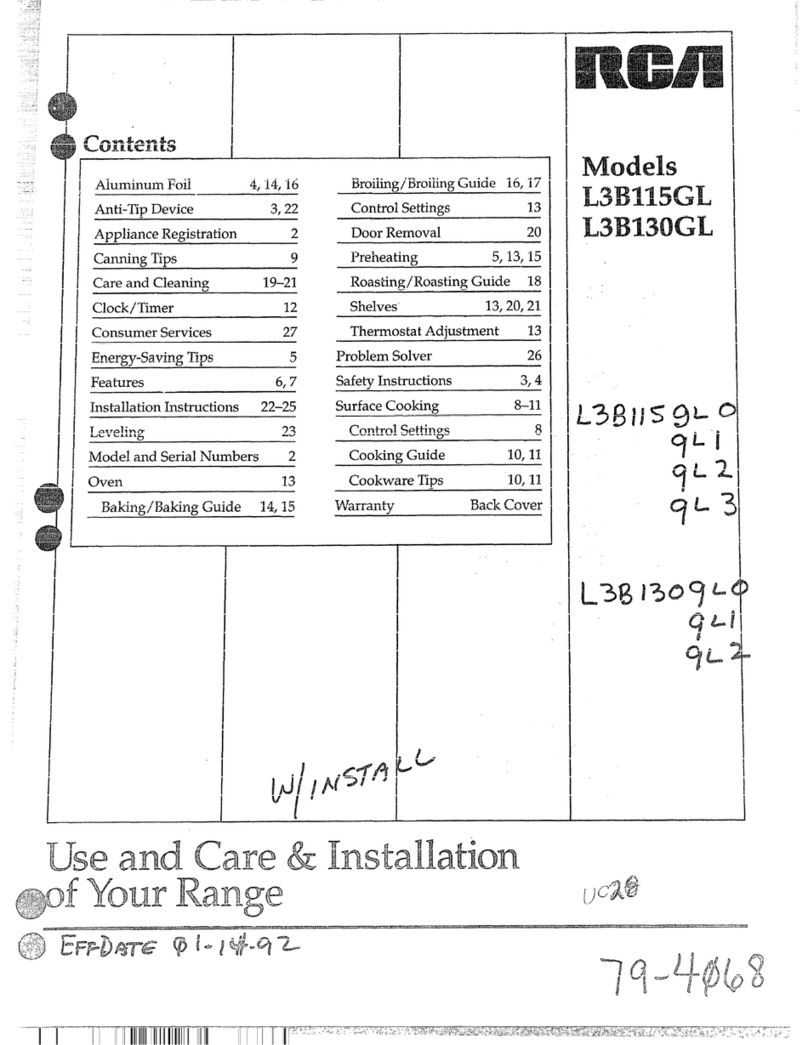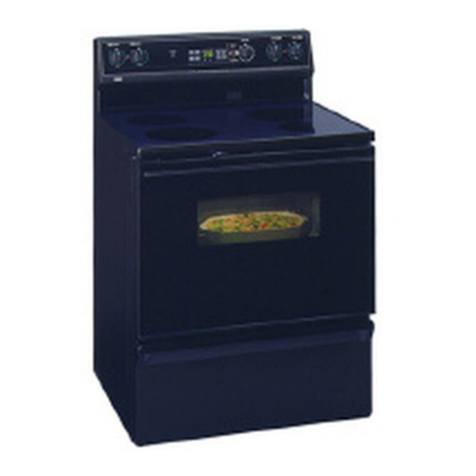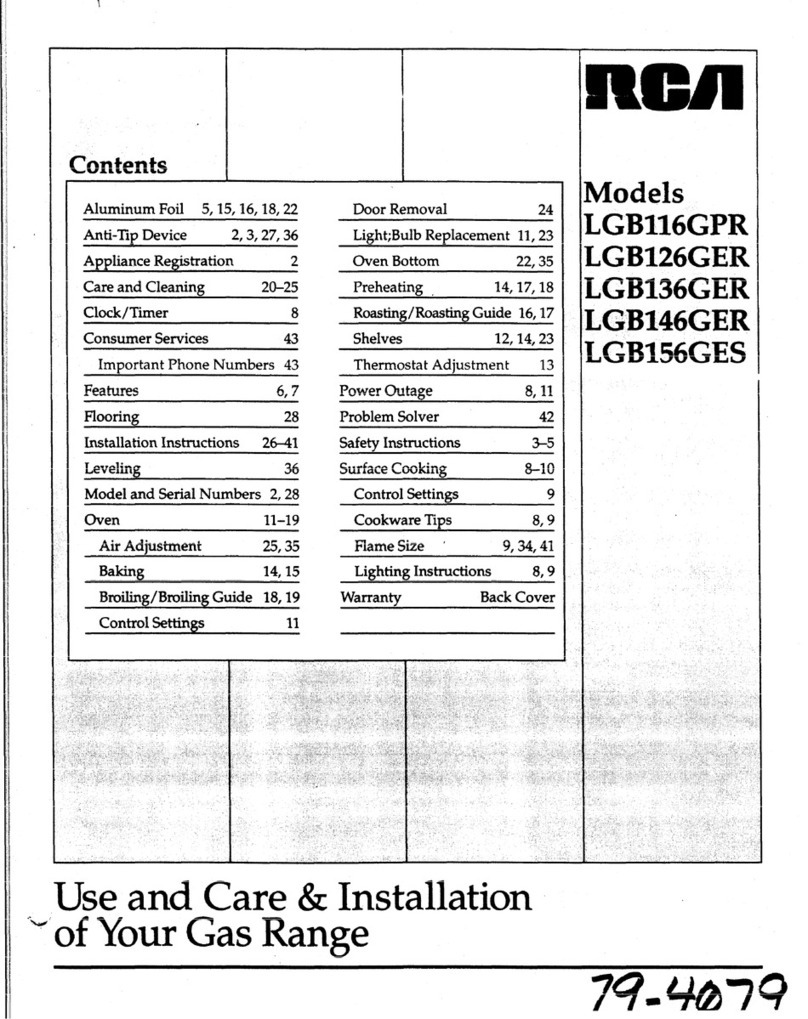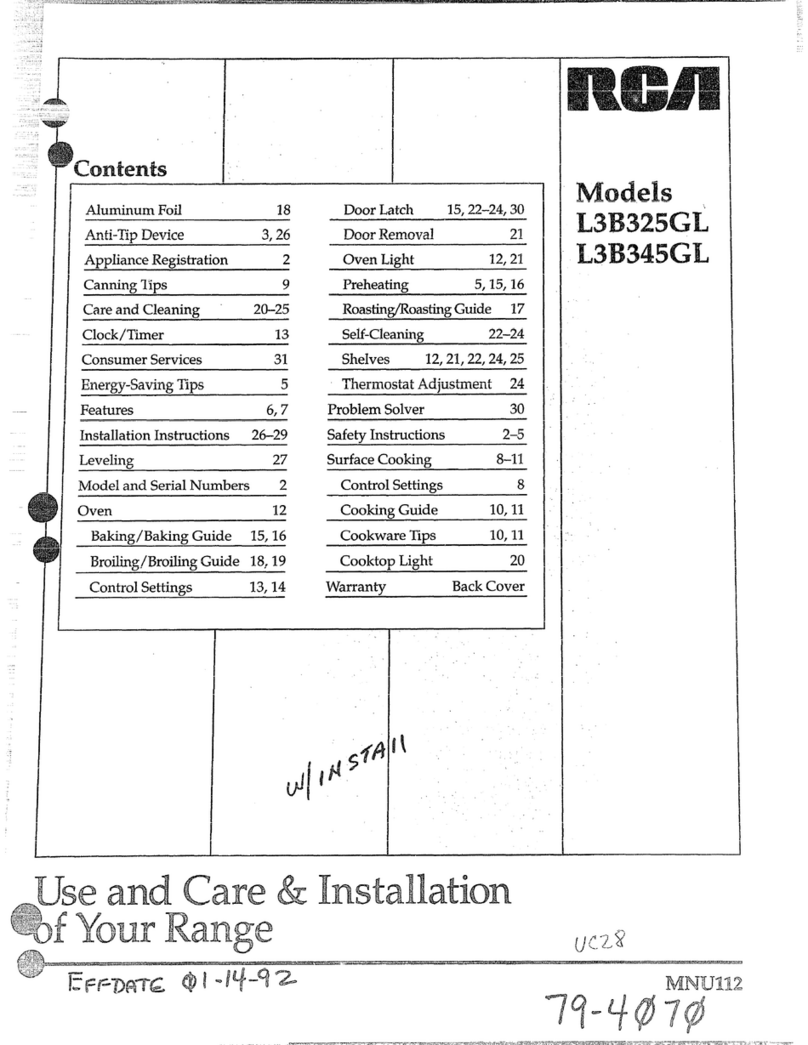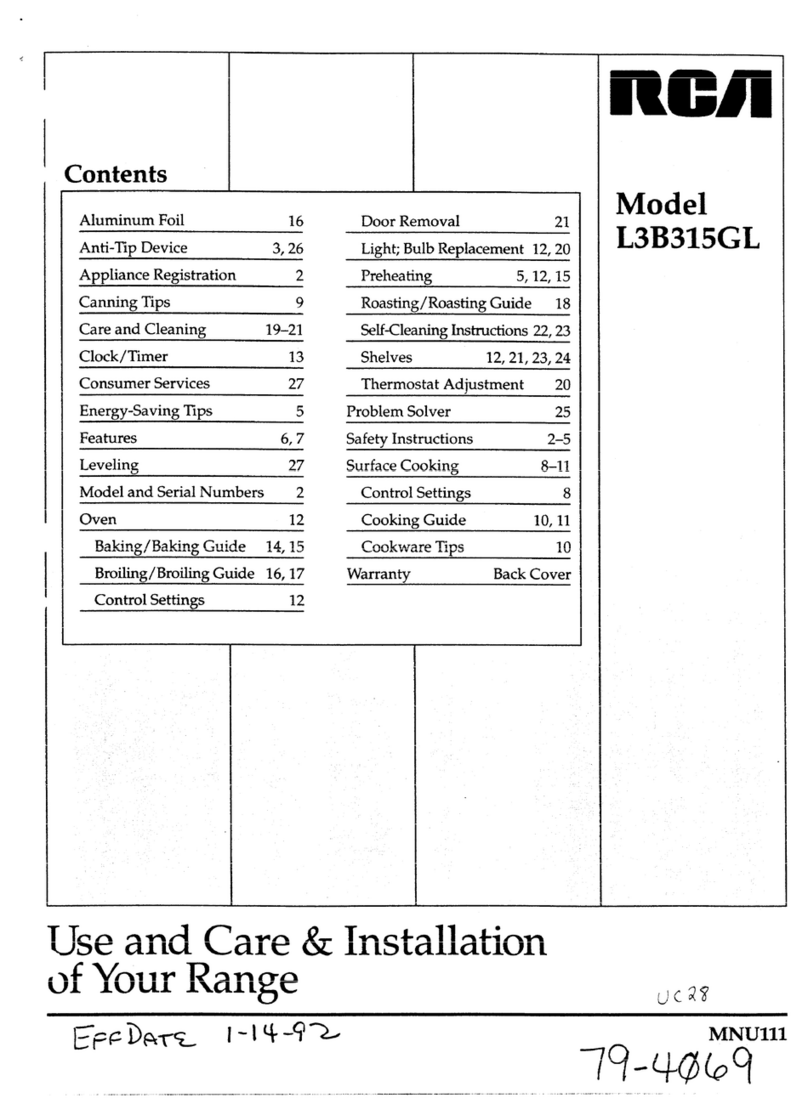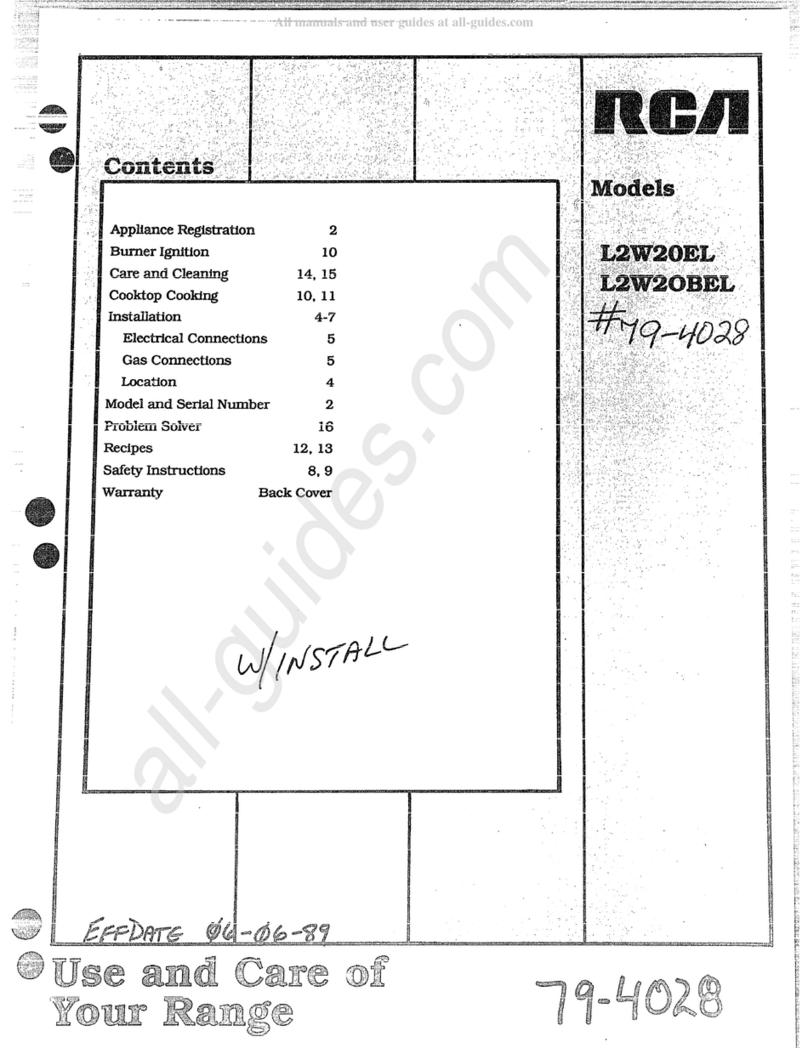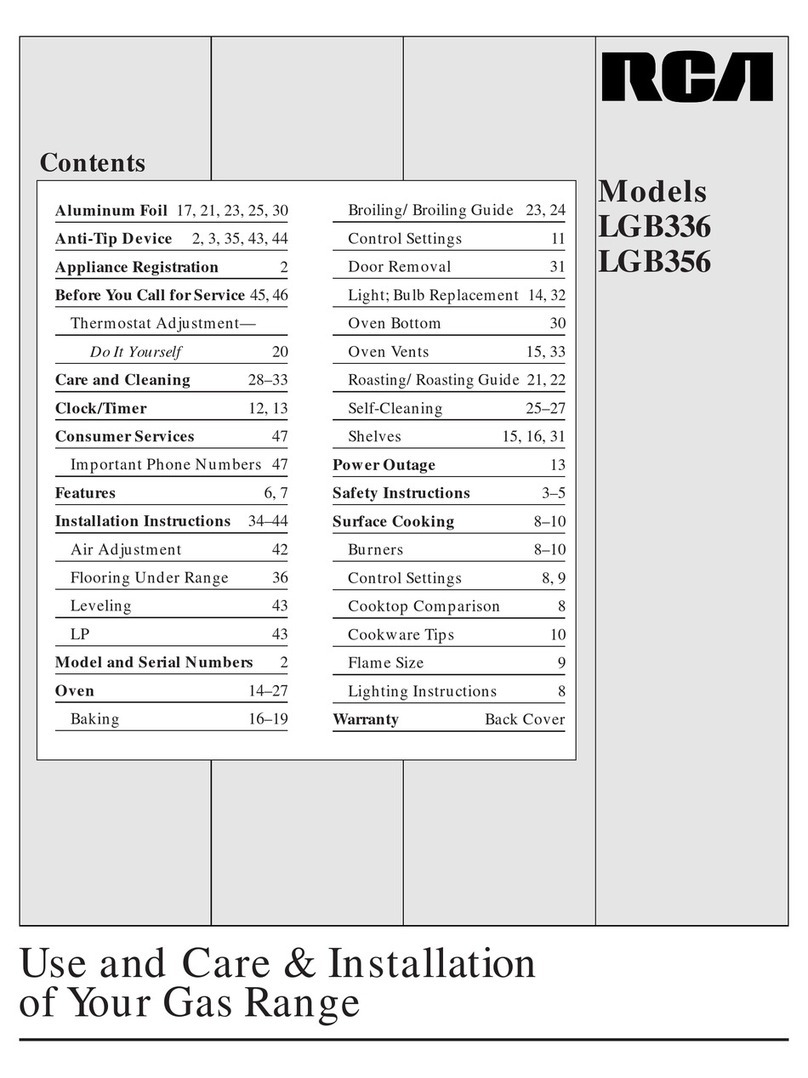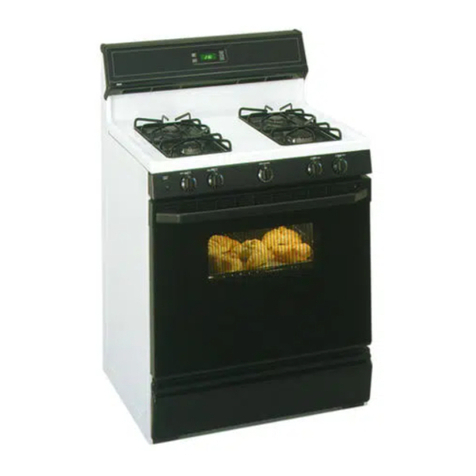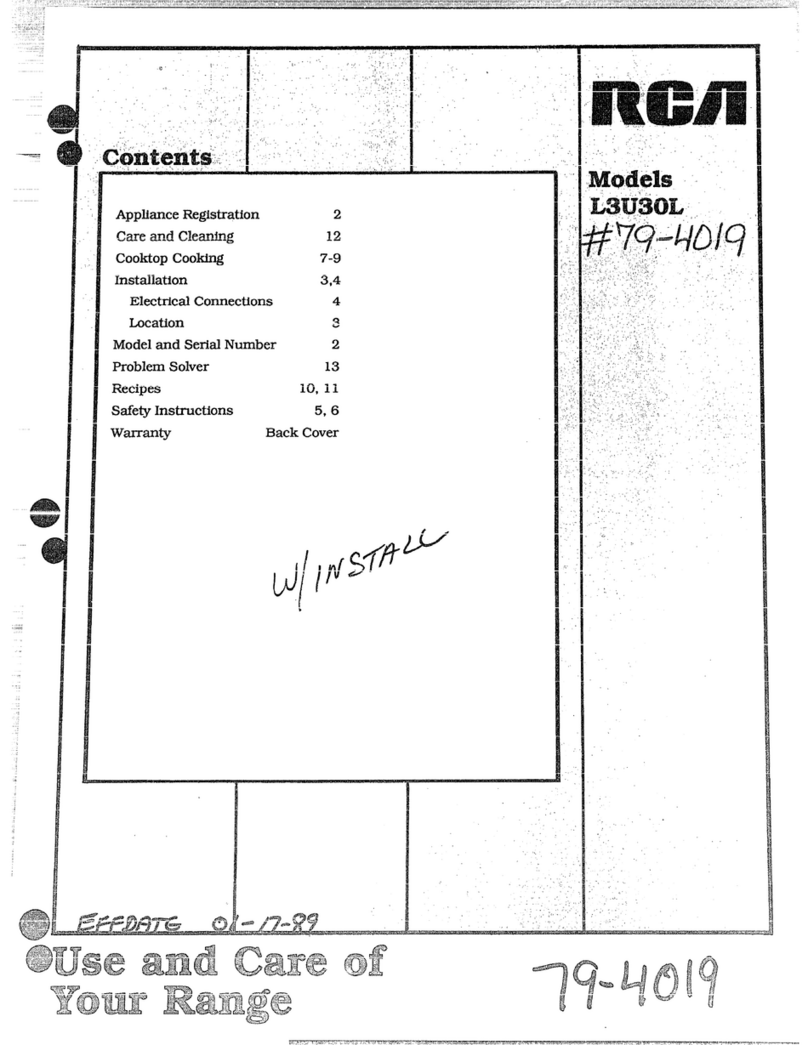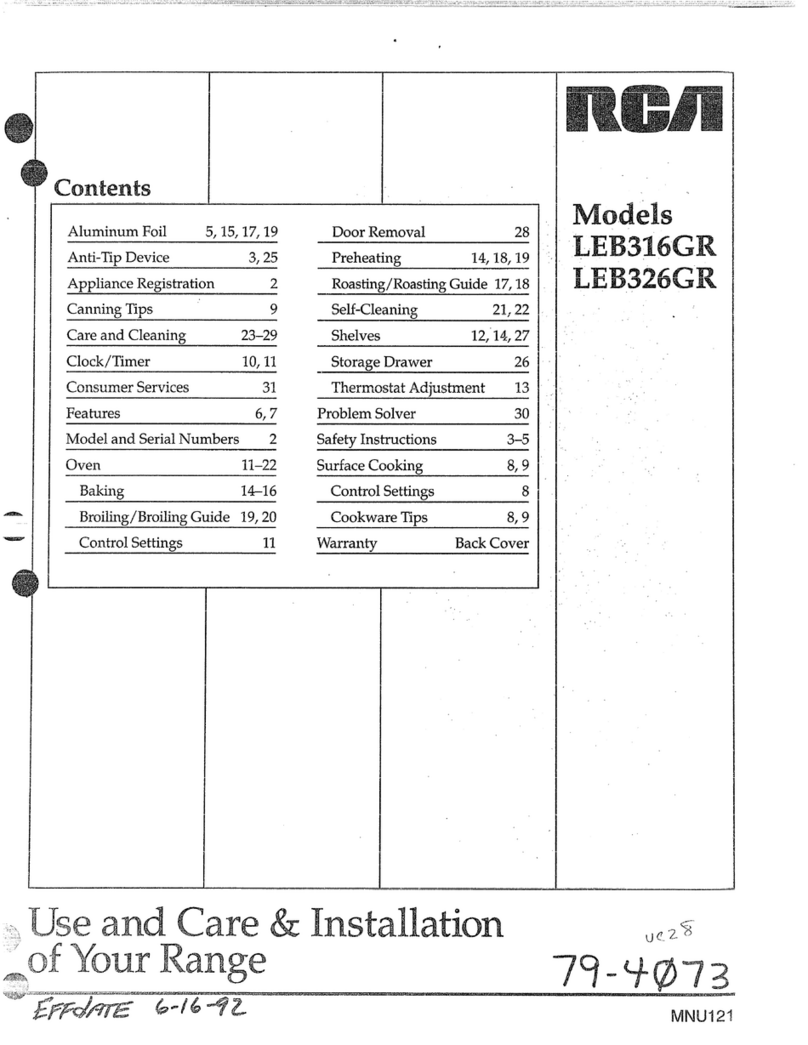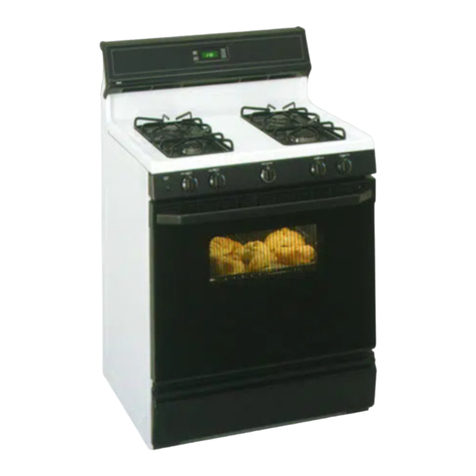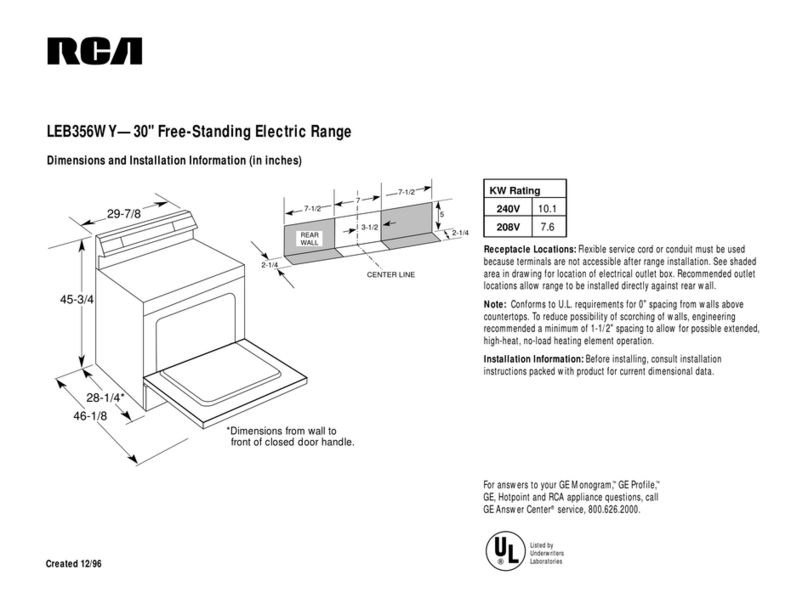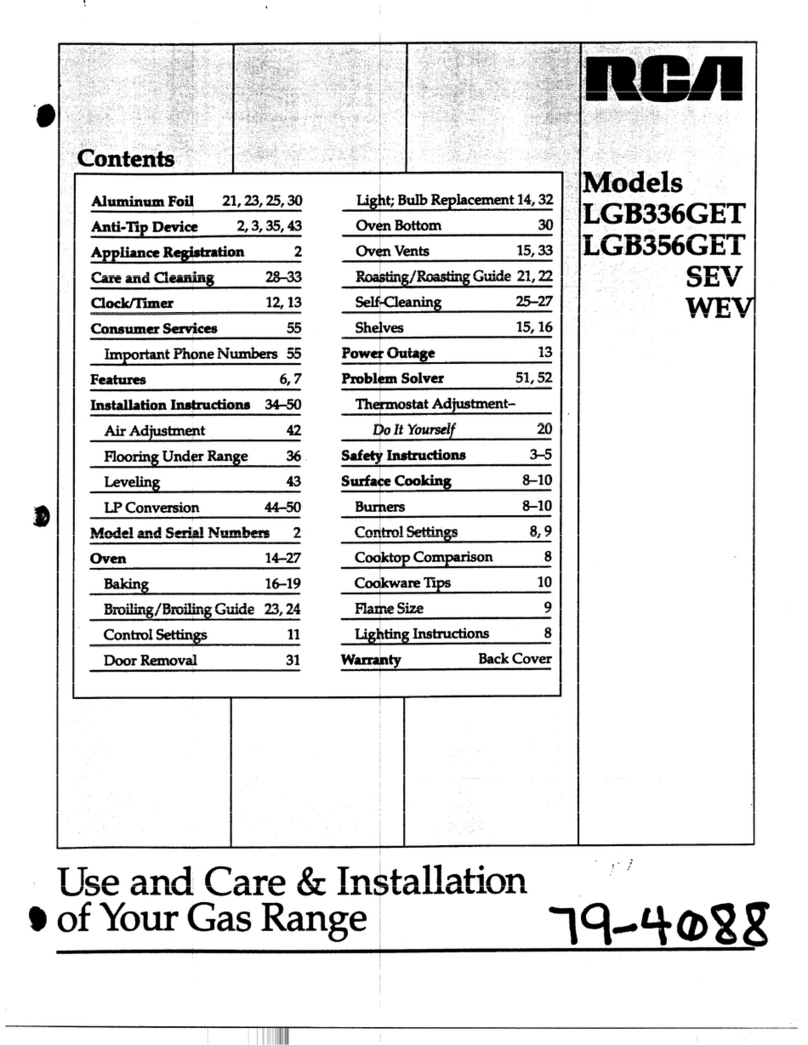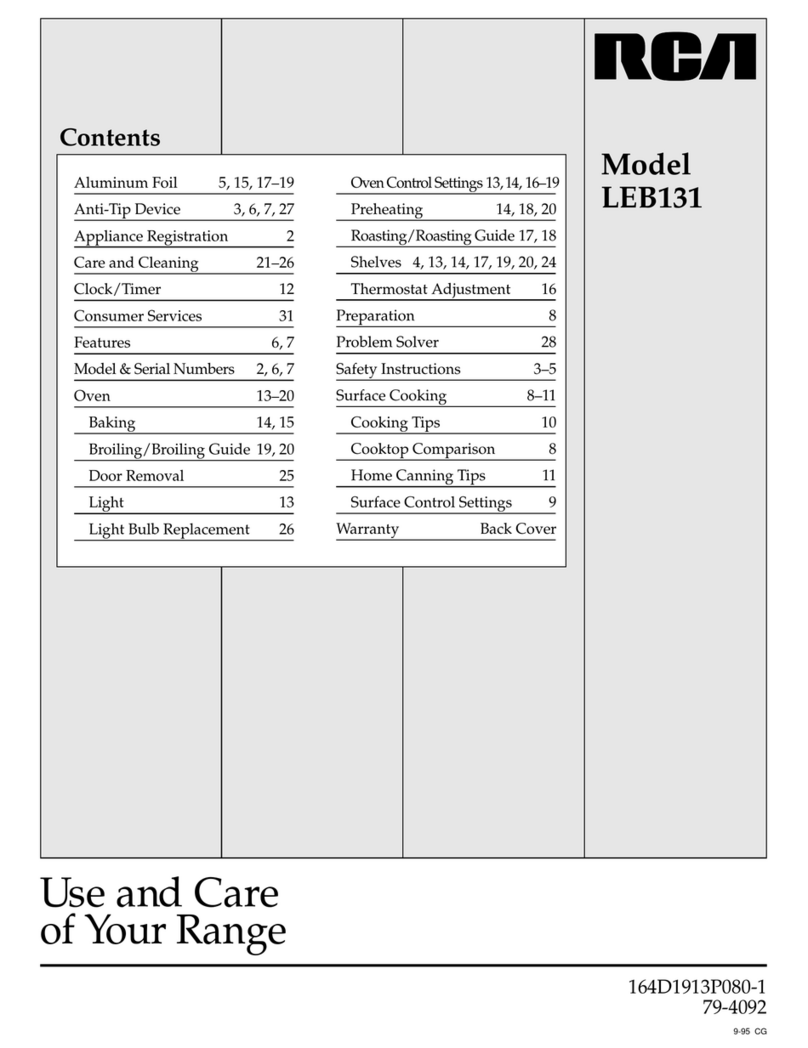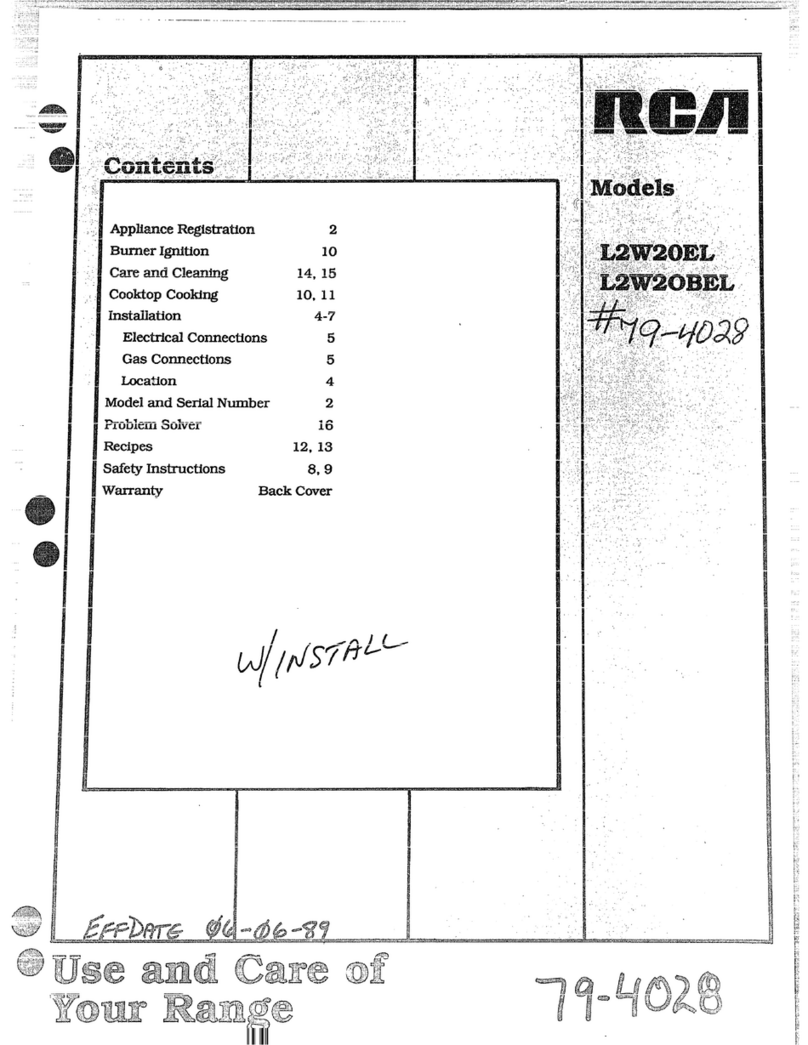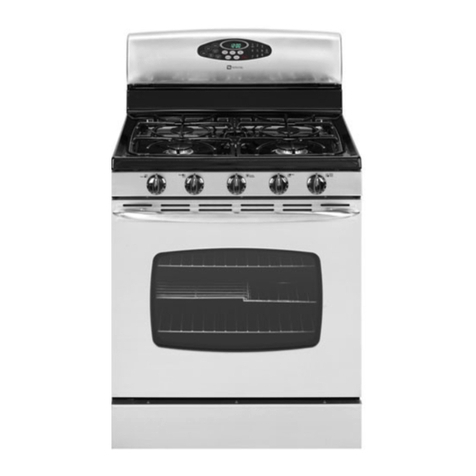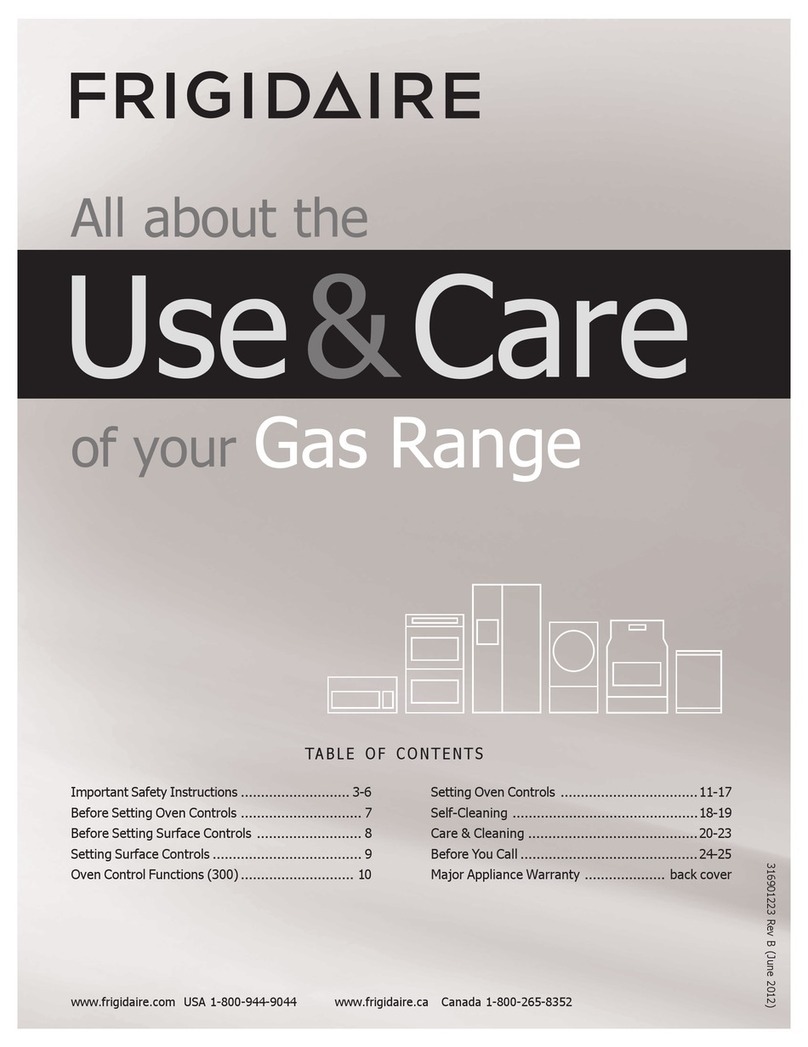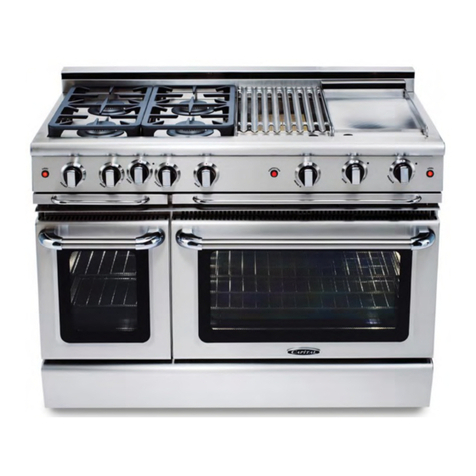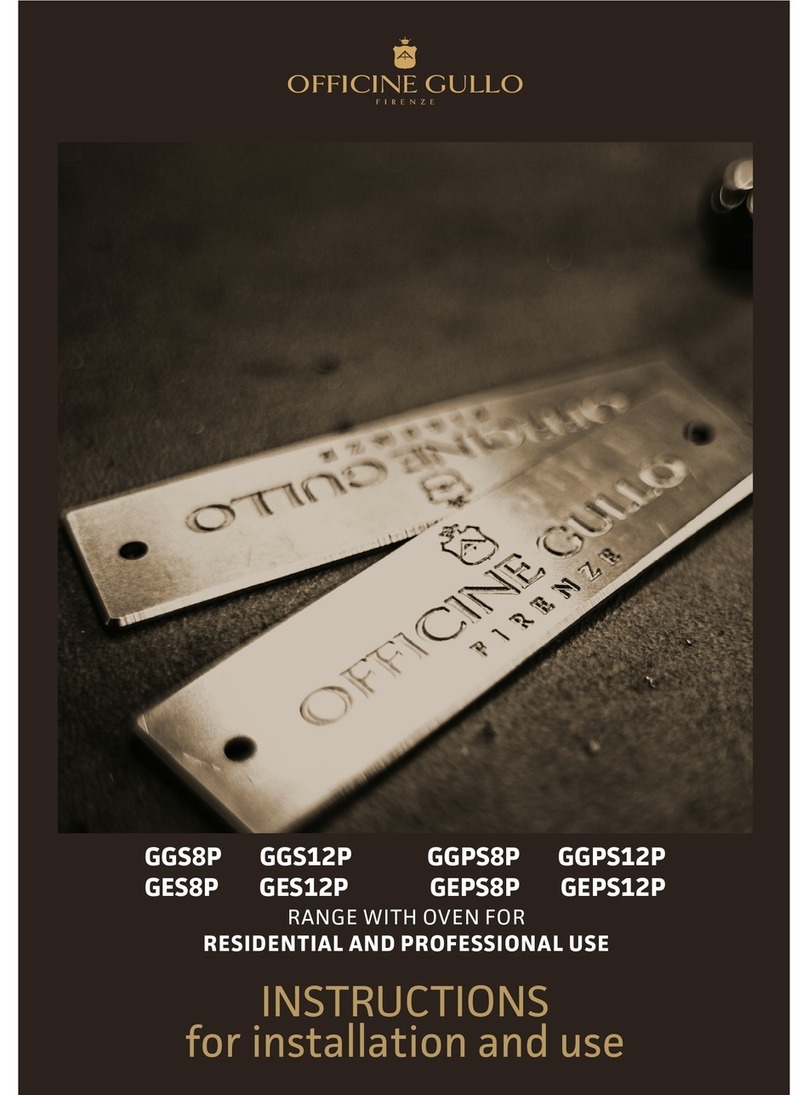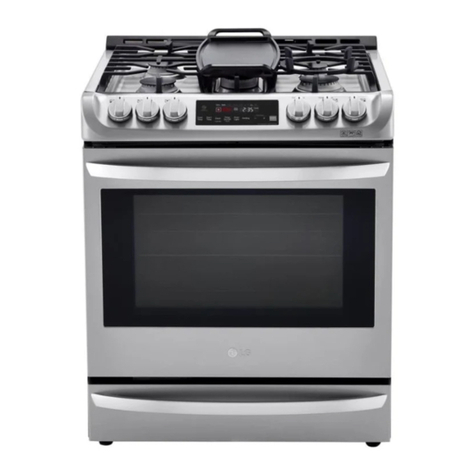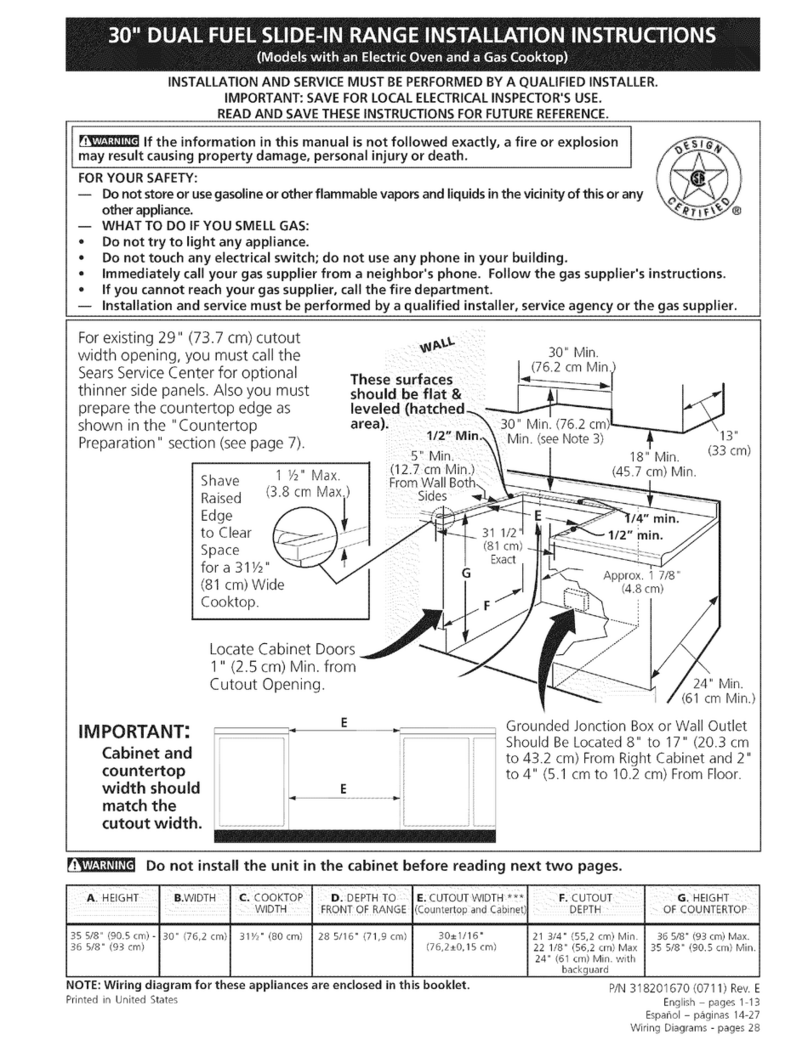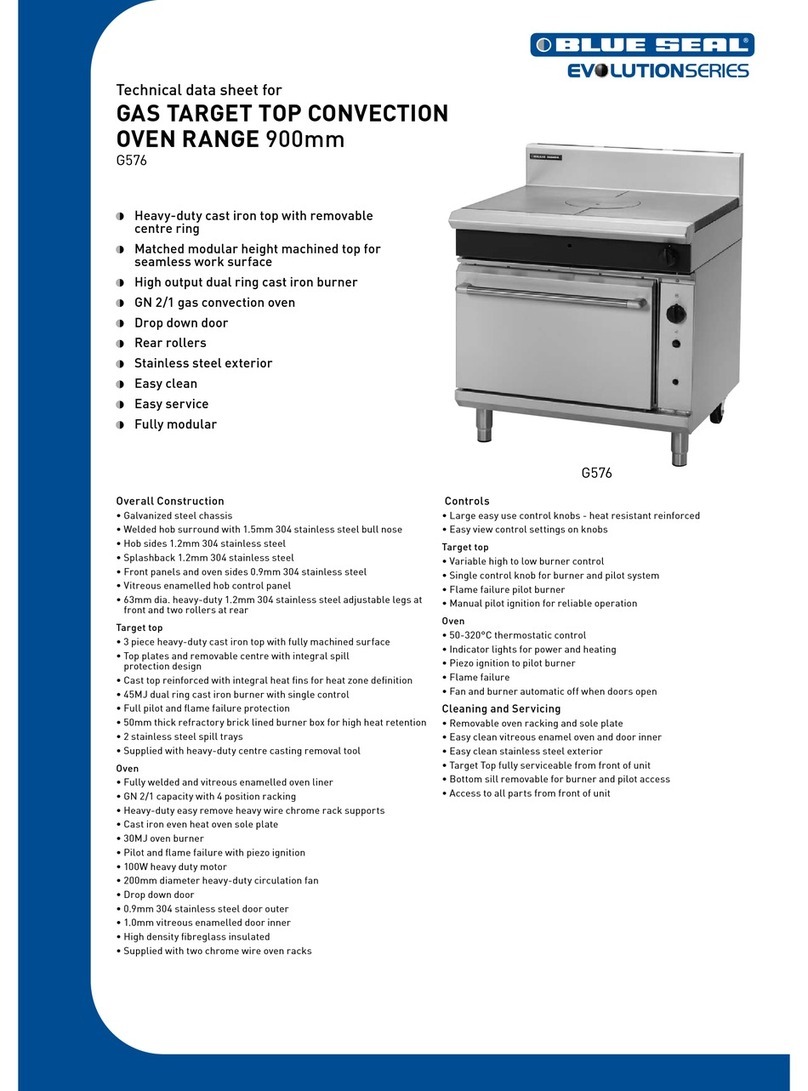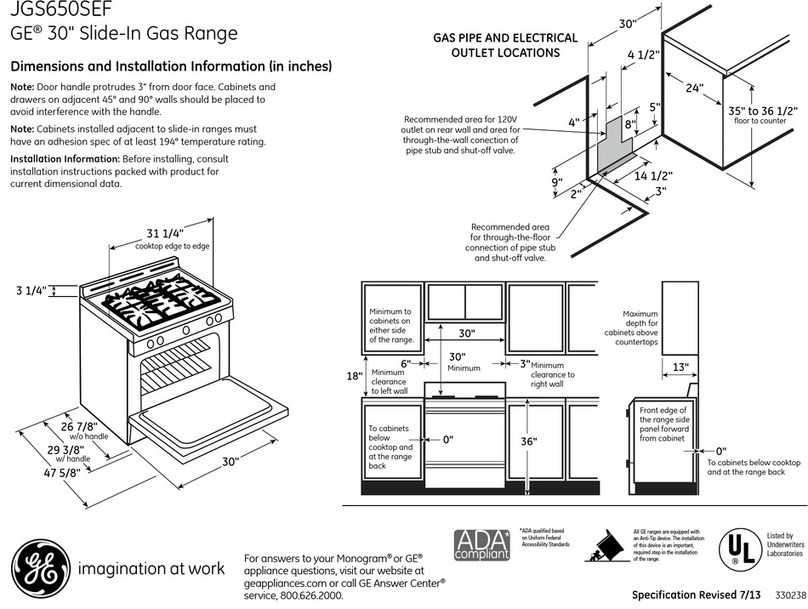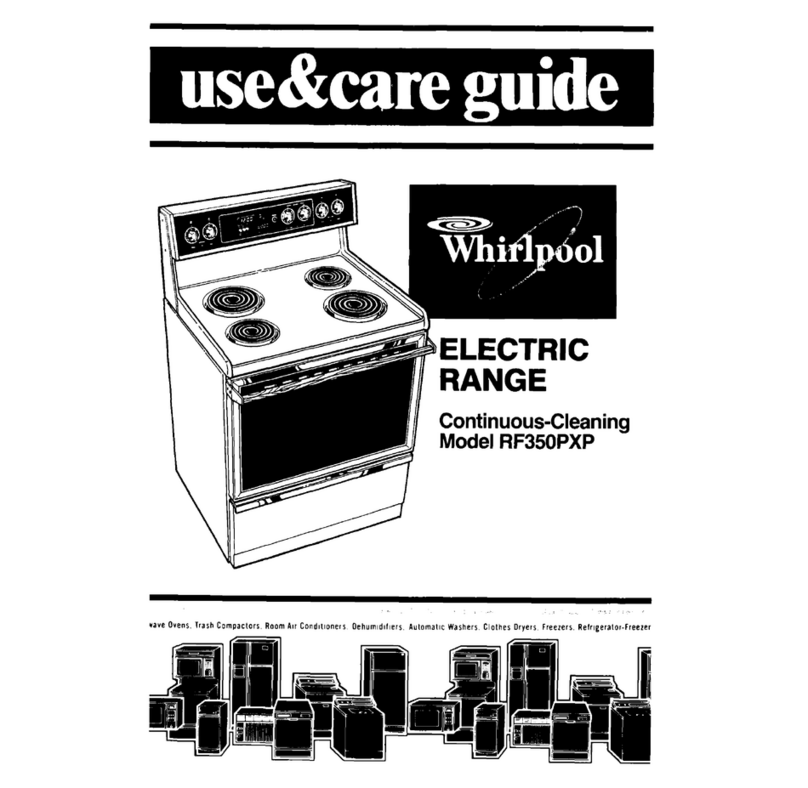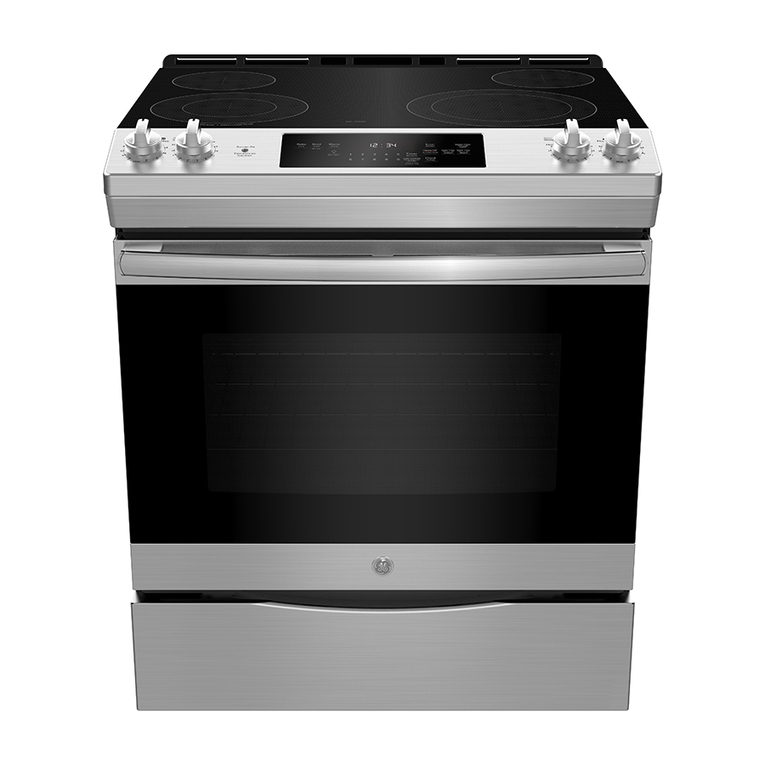DO■== DON’T...
Keep this book for later use.
le sure your range is installed and grounded
properly.
Choose pots acd pans with flat bottoms, large
enough to cover the entire cooktop element. This
will cut down the risk of setting pot holders or
clothing on fire with an uncovered element and
waste less energy.
Always use care when touching cooktop ele-
ments, areas near cooktop elements, oven heat-
ing elements or inside the oven. tieating ele-
ments could be hot enough to burn you even if they
are dark in color. The oven vent duct and oven
door may also become hot during range use.
Only some kinds of glass or ceramic pans can be
used for cooktop cooking. Be sure that the pan
you use will not break when heated on the cooktop
elements.
Always change oven rack positions while oven is
cool.
Mter broiling, always take the broiler pan out of the
ange and clean it. Leftover grease in the broiler
pan can catch on fire next time you use the pan.
Always use dry pot holders when removing pans
from the oven orcooktop. Moist or damp pothold-
ers can cause steam burns.
Always use care when opening oven door. Let
hot air and steam out before moving food.
Always follow cleaning instructions in this book.
Always remove the broiler pan and other utensils
from the oven before aself-clean cycle.
Never tryto repair or replace any part of the range
unless instructions are given in this book. All other
work should be done by askilled technician.
Never heat unopened food containers. Pressure
build up may make container burst and cause
injury.
Never leave jars or cans of fat or drippings on or
near the range. Never let grease build upon your
range. You can keep grease fires from statiing if
you clean up grease and spills after each range
use.
Never use aluminum foil to line drip bowls or oven
bottoms. Improper use of foil could start afire.
Never block free airflow through the oven vent.
Never try to move a pan of hot fat, especially a
deep fat fryer. Wait until the fat has cooled.
Never put removable heating elements in water.
Never use the cooktop without reflector pans or
drip bowls being in place. If these pans or bowls
are not there during cooking, wiring or other range
parts may be damaged (does not apply to ranges
with solid disk cooktop elements).
Never rub, move or damage the door gasket on
self-cleaning ranges. The gasket is essential for a
good seal. Only clean the gasket by soaking it
with hydrogen peroxide, as described in the self-
clean section of the manual.
Never use water on agrease fire -it will only OVEN FIRE
spread the flames. 1.Close oven door and turn controls off.
COOKTOP GREASE FIRE 2. If fire continues, throw baking soda on the
Never pick up a flaming pan...lnstead: fire.
1.Turn off the element.
2. Smother the fire with atightly fitting pan
lid, baking soda or an extinguisher.
ESAF13-1

